Israel Signs Deal To Buy $3 Billion In US Helicopters, Refueling Tankers

Israel has signed a deal with the United States to buy 12 Lockheed Martin CH-53K helicopters and two Boeing Co KC-46 refueling planes, the defense ministry said on Friday.

Israel has signed a deal with the United States to buy 12 Lockheed Martin CH-53K helicopters and two Boeing Co KC-46 refueling planes, the defense ministry said on Friday.
The deal amid heightened tensions with Iran is estimated to total at around $3.1 billion, according to the defense ministry.
Israel has repeatedly said in recent months that it will not hesitate to attack Iran if Tehran's nuclear program approaches a weapons' capability.
The deal, signed on Thursday, is part of an upgrade of Israel's air force capabilities and includes an option to buy six additional helicopters, a ministry statement said.
It said the first helicopters were due to arrive in Israel in 2026. Brigadier-General Shimon Tsentsiper, chief of materiel for the air force, told Israel's Army Radio on Thursday that the refueling planes on order would not be delivered before 2025.
He said Israel was trying to bring forward the delivery of the KC-46s, and eventually wanted a total of four of them.
Israeli media have speculated that the refueling planes could be crucial for carrying out a long-threatened air strike on Iran's nuclear facilities. Tsentsiper said the air force's current refueling capacities were sufficient for its missions.
With reporting by Reuters
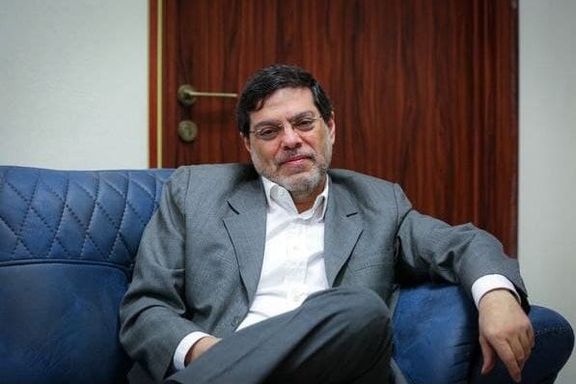
The presence of a man believed to be a United States citizen in Iran's nuclear negotiating team has led to controversy in Iranian media and on Twitter.
Social media users have criticized Mohammad Marandi, an advisor to the Iranian nuclear negotiations team in Vienna for making complacent comments about what may happen to Iran if the nuclear talks fail.
The Twitter account of reformist daily Sharq on December 28 quoted Marandi as having said: "What will happen if the UN resolutions against Iran are revived? We attach no value to the other side's ultimatums, because nothing is going to happen to us even if they pull out of the JCPOA and activate the trigger mechanism."
As part of the attacks on Marandi, Twitter users and some news websites in Iran said that Marandi is a US citizen so he should not be worried about the economic and other consequences of the JCPOA collapse.
Iranian investigative journalist and historian Hossein Dehbashi revealed on Twitter on December 25 that Marandi is a US citizen and questioned his presence in Iran’s diplomatic circle. Marandi in his response posted a picture on Twitter saying it shows him in Basij militia uniform when he was 16. He also said later that he was born in the United States, but he is not a US citizen or a green card holder. Dehbashi asked how come he can pay frequent visits to the United States.
Meanwhile, no one mentioned that if Marandi was born in the United States, then he is automatically a citizen.
According to Rouydad24 news website in Tehran, Mohammad Marandi was born in the US 1966. He is the son of Alireza Marandi who is Supreme Leader Ali Khamenei's family doctor. When he first came to Iran after his father was appointed Health Minister, Mohammad was only 13.
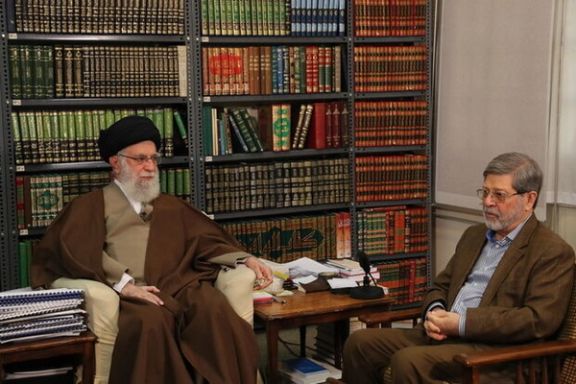
Mohammad Marandi has said that he did not speak Farsi when he came to Iran and he had a hard time at the Alavi High school, where most Iranian hardliners studied. This raises the question that his mother was not from Iran, but there is no public information about her. The headmaster of that school was Khamenei's Foreign Policy Chief Kamal Kharrazi who later became Iran's Foreign Minister under President Mohammad Khatami (1997-2005).
Mohammad Marandi also accompanied former Foreign Minister Javad Zarif's team during the nuclear negotiations from 2013 to 2015 although he was not part of the team. Zarif has officially praised him for his services as a liaison with Western media. In those years, Marandi appeared frequently on Iran's Press TV as well as on major US networks defending Tehran's hardliners.
According to Rouydad24 he also played a part in the negotiations by inviting some US public diplomacy players to Iran. Wat they did in Iran is not known. The hardline daily Kayhan at the time charged that Marandi's World Studies Center "secretly brought US public diplomacy officials to Iran." The daily called the center "an office similar to a branch of the Iranian Foreign Ministry."
Marandi was the dean of Tehran University's World Studies Center. Some call it the Faculty of World Studies. However, academics in Tehran say the center no longer exists. That could explain Marandi's official title as "Former head of the university's World Studies Center."
According to Rouydad24, Mohammad Marandi is a US citizen. The website has quoted him as saying that when living in an affluent neighborhood in Ohio he was subjected to racism as he was not considered "white."
Marandi has told US media that he is a big fan of the NFL and supported the Dallas Cowboys when he was in America.
Under President Ahmadinejad, Marandi used to explain the populist ultraconservative President's ideas on major US channels and often claimed that Ahmadinejad's controversial statements were not properly translated into English.
According to Rouydad24, during his TV appearances, Marandi proved to have access to confidential information in cases such as the seizure of foreign oil tankers by Iranian forces.
The website questioned Iranian officials’ double standard about dual nationals, and quoted Dehbashi as saying, "In the previous government being a dual national was considered a bad thing but now no one protests to a US citizen's placement in the nuclear negotiations team." Marandi has subsequently "blocked" Dehbashi and others who asked questions about his US citizenship and US passport, and only answered that he does not have a social security number in the United States.
According to Rouydad 24, Marandi repeatedly introduced himself as a US citizen in an interview with US Guernica Magazine in 2008. "As a child, I used to feel much more American than Iranian. Like everyone else at school, I pledged allegiance to the flag. However, after returning to Iran, sadly, I learned about a very different America, an America that most Americans have no idea exists. For the first couple of years this was hard to accept, and it was really painful in some ways."
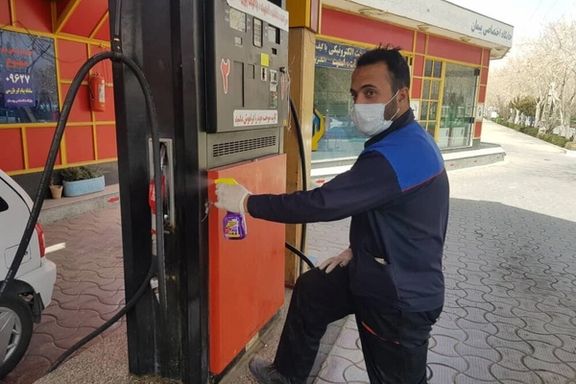
Iran plans to change the pricing system for subsidized gasoline it sells to citizens in a way, which will generate around $5.5 billion more revenue annually.
All carbon fuels are produced and distributed by the government in Iran with extremely low prices. The lowest price is 6 US cents per liter or 22.7 cents a gallon. Each car receives monthly 60 liters of gasoline at the lower price and beyond that, drivers must pay 12 cents a liter.
The new plan is to give subsidized gasoline not to each vehicle but to each citizen, reducing the volume to 15 liters per month. People who have cars and need more gasoline than their allotment have to pay 60 cents a liter ($2.27 per gallon), which is the gasoline bulk rate in the Persian Gulf region.
People who have no cars but receive their coupon for the 15 liters of 6-cent gas from the government can sell it to others on a mutually agreed price.
Now, let us see how the government will make a minimum of $5.5 billion profit by changing the gasoline pricing system.
Currently, 85 million liters of gasoline is consumed per day in Iran. Around 60 million liters is sold for the discounted price of 6 cents and the rest for 12 cents a liter. The government’s income from this is $7.8 million a day or $2.84 billion a year.
In the new system, each one of the 83 million citizens will receive half a liter of gasoline per day for 6 cents a liter, or about 41 million liters. The rest of the daily 85-million-liter consumption will be sold for 60 cents per liter, or ten times more than the discounted price. This will boost government revenue from gasoline 3.7 times to $29 million per day, or $8.32 billion annually. This means the minimum additional revenue will reach $5.5 billion a year.
Reforming the huge fuel subsidy system, which has been a drag on the economy might be a good idea, but amid an economic crisis it will contribute to inflation, as business and transportation costs will rise.
The fuel subsidy is not just for gasoline. Price for one liter of diesel will remain at one cent a liter or 4 cents a gallon, compared to almost $6 in Europe or $3.60 in the United States. The same huge difference applies to natural gas and electricity, bringing the total fuel subsidy to near $60 billion annually, or more than Iran’s oil exports if there were no sanctions.
The $5.5 billion-dollar additional profit is a minimum estimate. In fact, millions of Iranians have left the country and will never use the 6-cent gasoline and many others who are in the country who have no cars or access to internet will not be able to exchange their 15-liter monthly allotment for money. Therefore, the government will sell much more gasoline for 60 cents a liter, making up for some the oil revenues it has lost because of US sanctions.
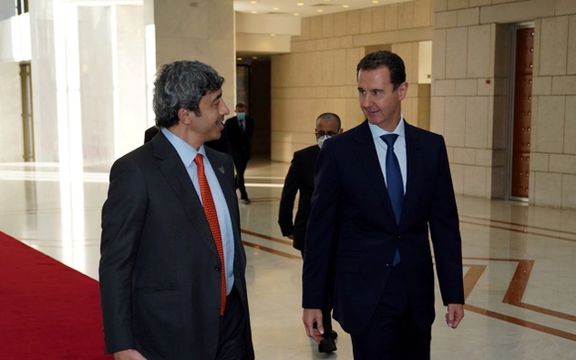
Bahrain became another Persian Gulf Arab state to appoint its first ambassador to Damascus on Thursday since it downgraded ties early in the conflict in Syria.
The appointment of Waheed Mubarak Sayyar, reported by Bahrain's state news agency BNA, is part of a diplomatic shift in the Middle East as a growing number of Arab countries revive ties with President Bashar al-Assad.
Gulf Arab states downgraded or shut missions in Damascus after the Syrian government used force against the 2011 protests that developed into war. Bahrain has said its embassy, and the Syrian diplomatic mission in Manama, have remained operational.
Last month, the United Arab Emirates, which re-opened its mission to Damascus in late 2018, sent its foreign minister to Damascus where he met Assad. It has called for Syria to be readmitted to the Arab League.
Abu Dhabi began to re-engage with Damascus after decisive gains by pro-government forces, hoping to increase Arab clout in Syria at the expense of non-Arab Turkey and Iran, which supports Assad.
The UAE was one of several regional states to back rebel groups in Syria, though its role was less prominent than those of Saudi Arabia and Qatar, which have not re-established ties with Damascus.
Oman last year became the first Gulf state to reinstate an ambassador to Syria.
Report by Reuters
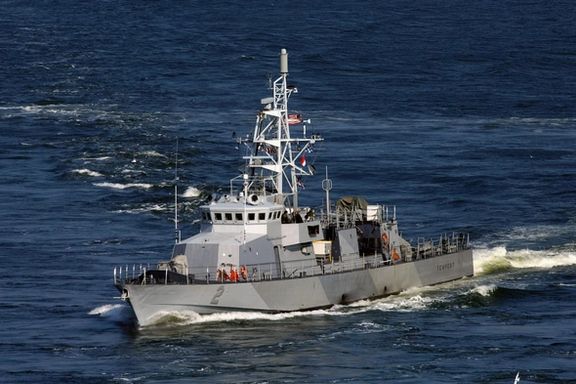
The US Navy seized a stateless fishing vessel on Monday, believed to have originated in Iran, carrying $4 million worth of heroin in the Arabian Sea.
The spokesman for the US Fifth Fleet, Timothy Hawkins, said on Thursday that the vessel probably came from Iran because all nine crew members identified themselves as Iranian nationals.
According to Commander Hawkins, about 385 kilograms of heroin were confiscated in the bust by the USS Tempest and USS Typhoon patrol ships.
The drugs were destroyed at sea by US forces and the crew members were released, a statement said.
Last week the US Navy seized a vessel in the Arabian Sea with thousands of weapons and a large cargo of ammunition on board. This vessel was also believed to have originated in Iran.
About two week earlier the US Navy had rescued five Iranian sailors following in an explosion on their vessel, transiting the Gulf of Oman, and seized its cargo of more than two tons of hashish, methamphetamine and heroin, worth over $14.7 million.
"In 2021, the international Combined Task Force 150 has seized illegal drugs worth more than $193 million (at regional wholesale prices) during counter-narcotics operations at sea… This is a higher total value than the amount of drugs the task force interdicted in the previous four years combined”, Thursday's statement added.

The rising number of metro train accidents in Iran is due to a serious need of overhaul for most of the existing wagons, a new report has revealed.
The report published in an Iranian daily on Thursday says over 70 percent of the wagons active in Tehran-Karaj metro line are too old for operation, adding that about 45 percent of them should be stopped for major repairs.
According to the report, Tehran’s municipality hasn’t allocated enough budget for timely maintenance. Although money was available, the authorities opted for the expansion of lines instead of overhauling the existing fleet, the report said.
The Tehran metro network, with seven active lines stretching over 250 kilometers of railways and more than a thousand wagons,carrying over two million passengers a day.
Iran’s government faces a cash-crunch due to United States oil sanctions since 2018, and procurement problems because of international banking restrictions.
On Wednesday, a freight train traveling from Tehran to Mazandaran province derailed, causing material damage to over a dozen wagons. This was the second such accident in about a week.
More than 20 people were injured last week when two metro trains collided on the Line 5 of the Tehran metro on the Karaj-Golshahr railway.